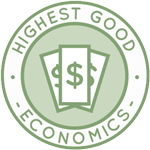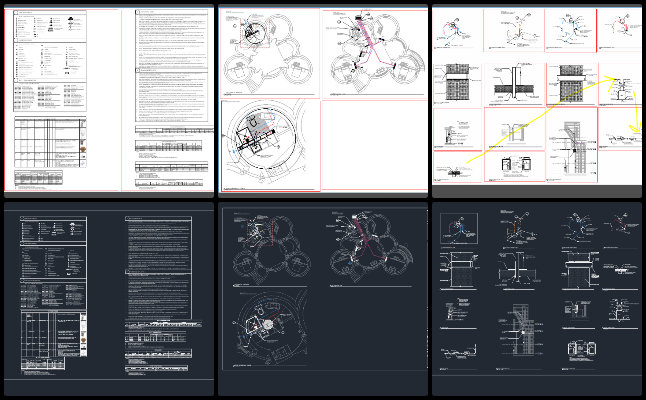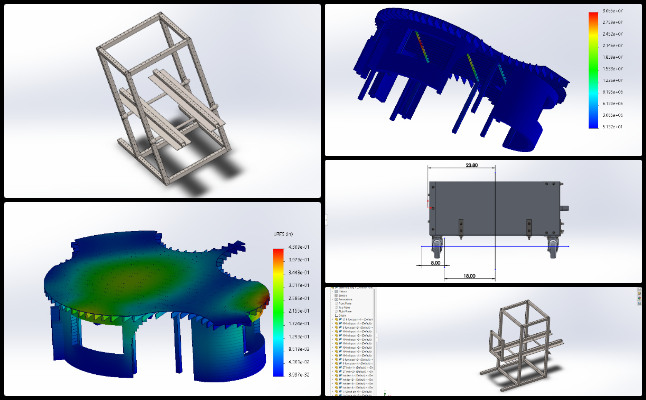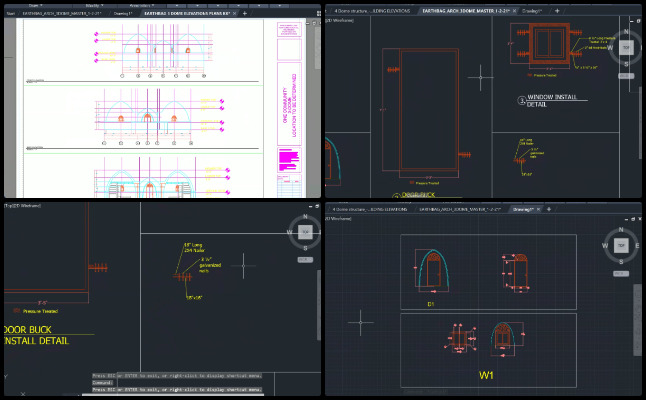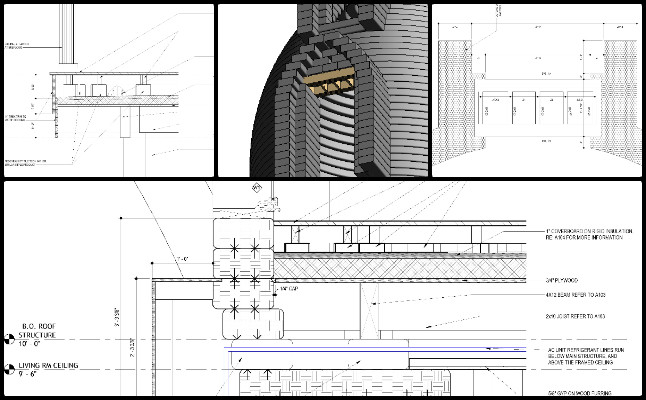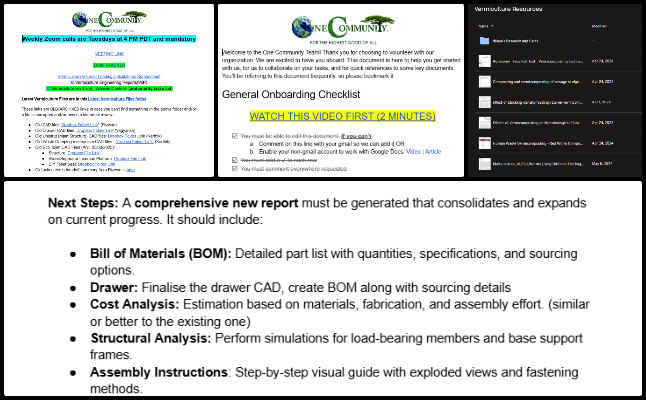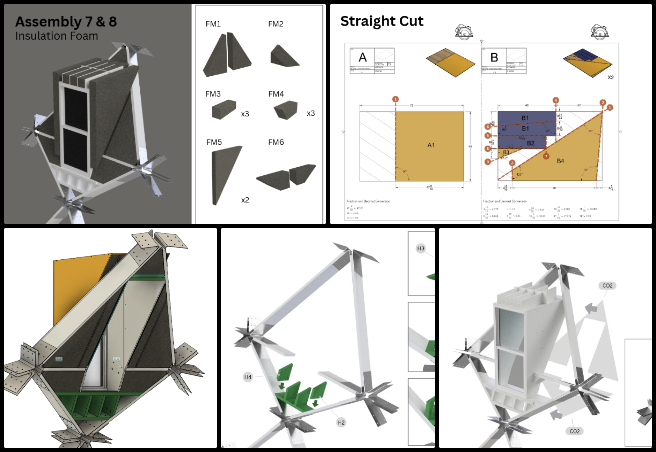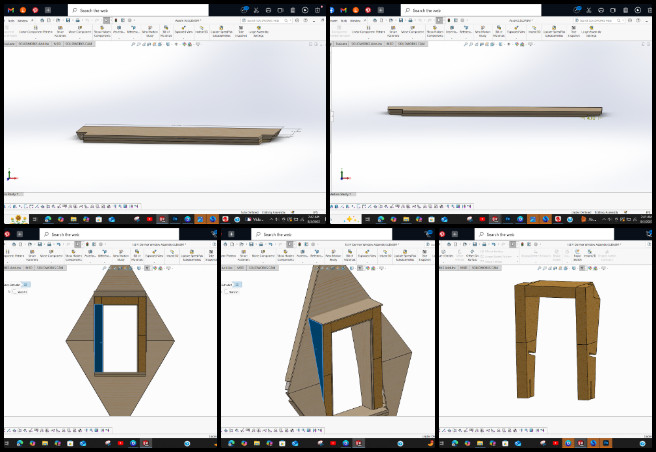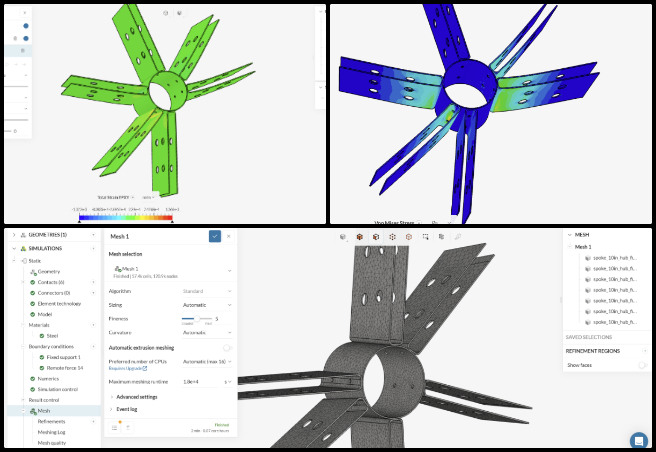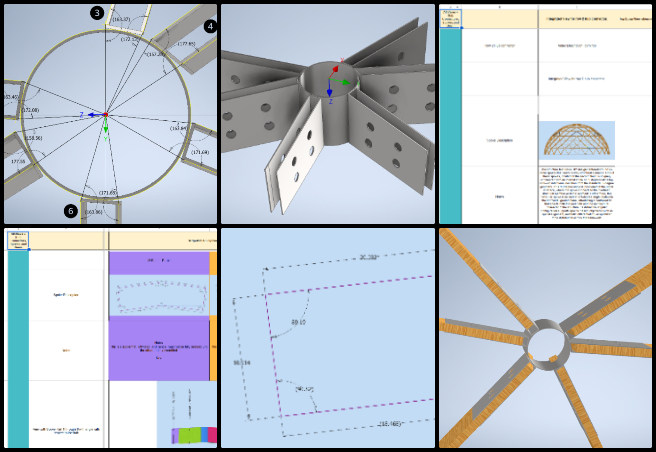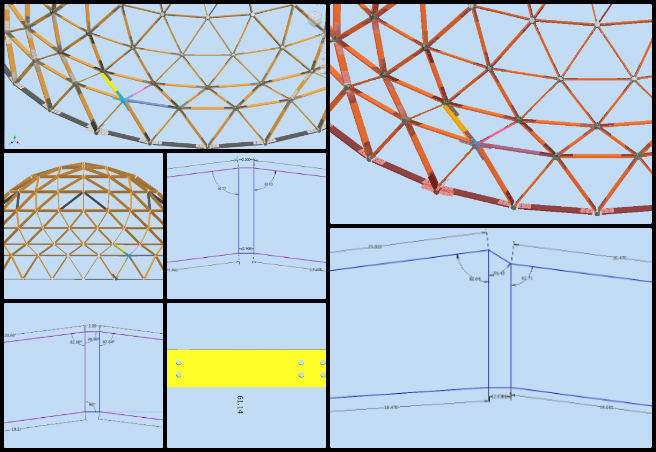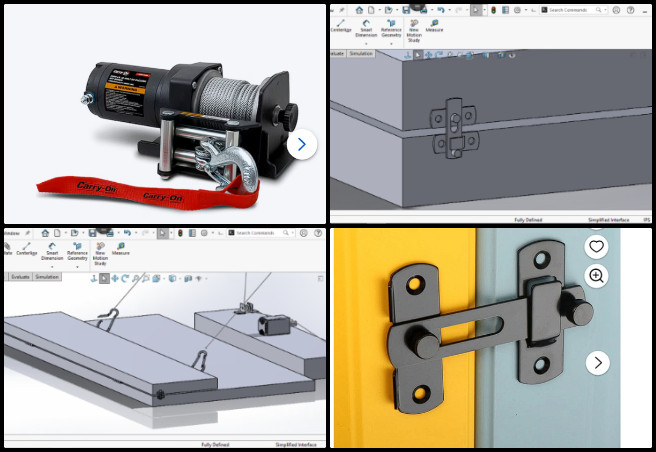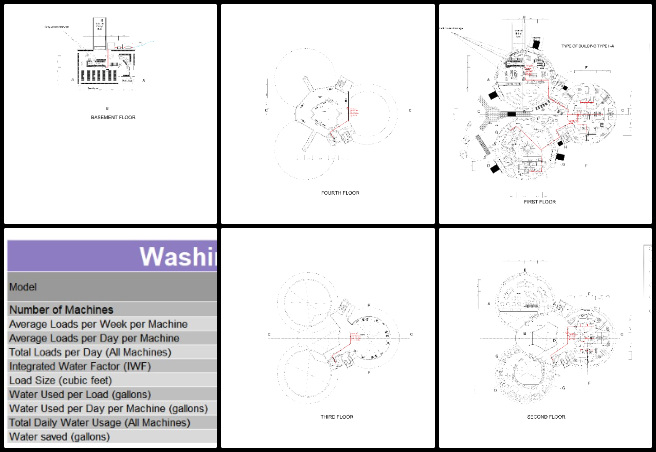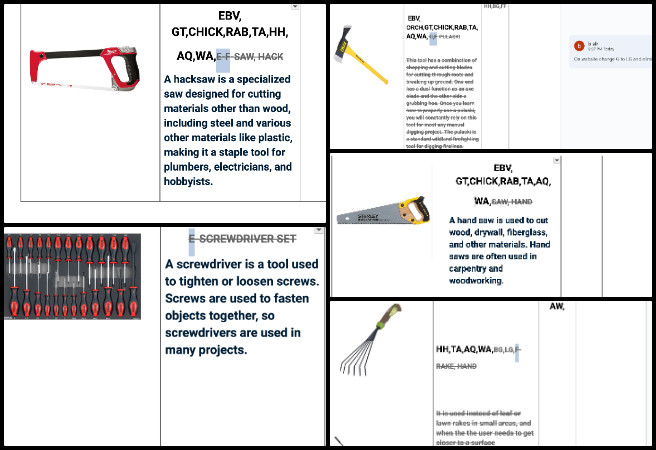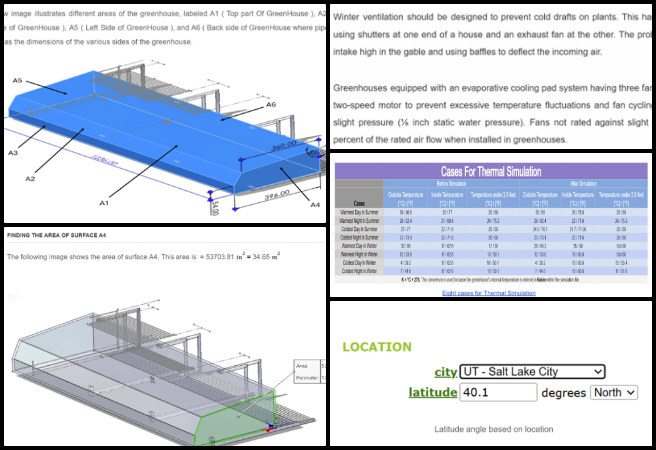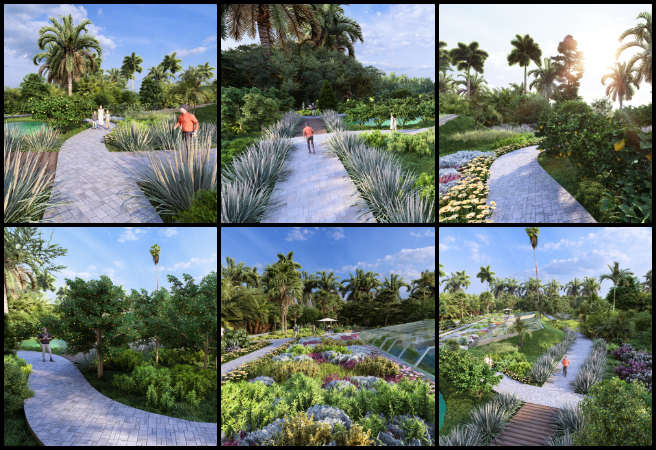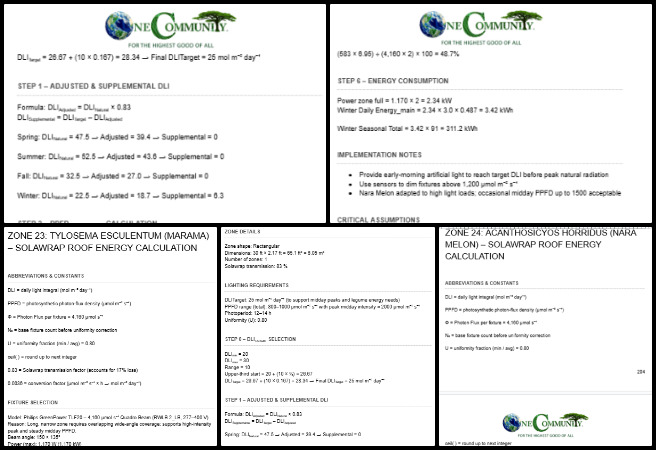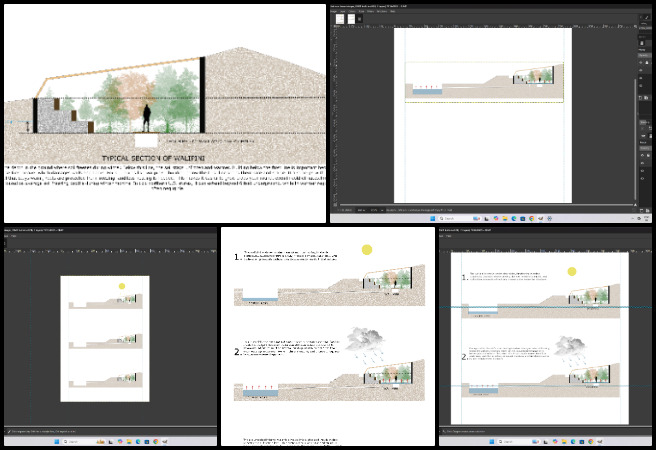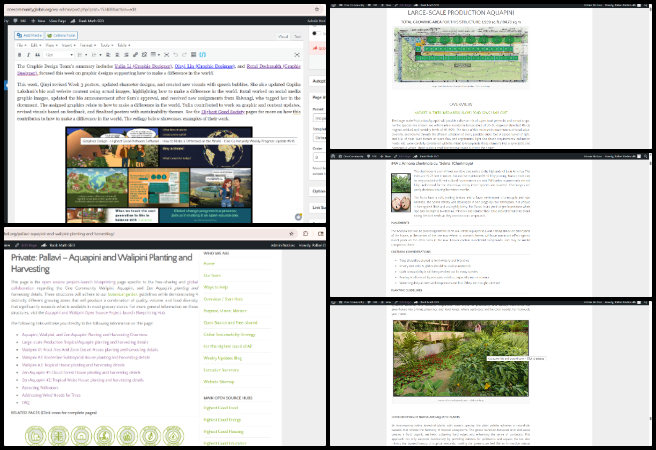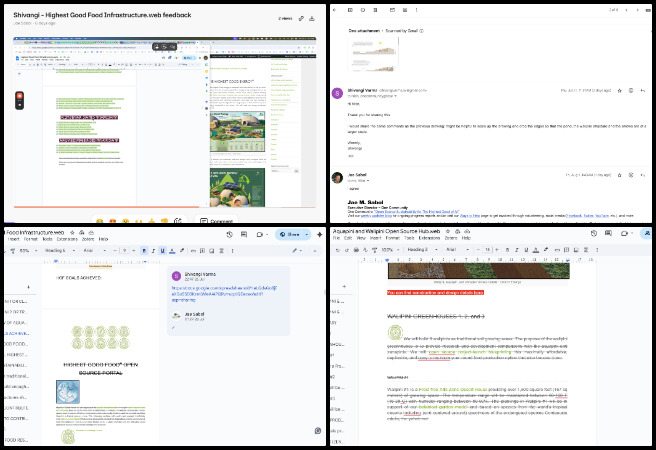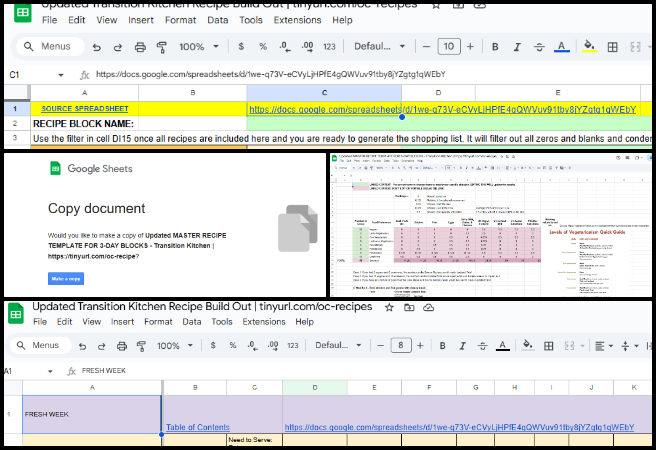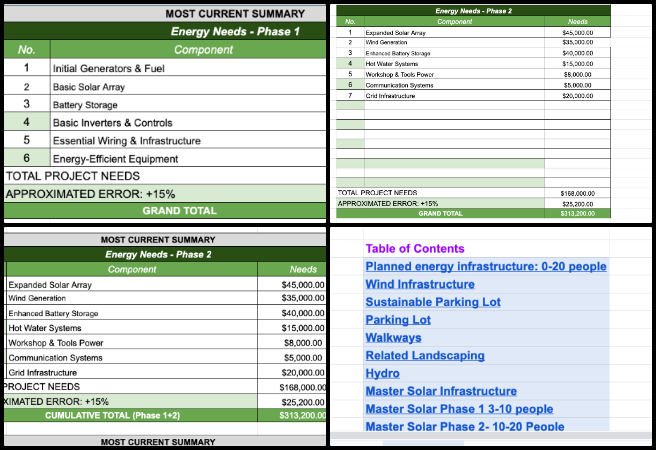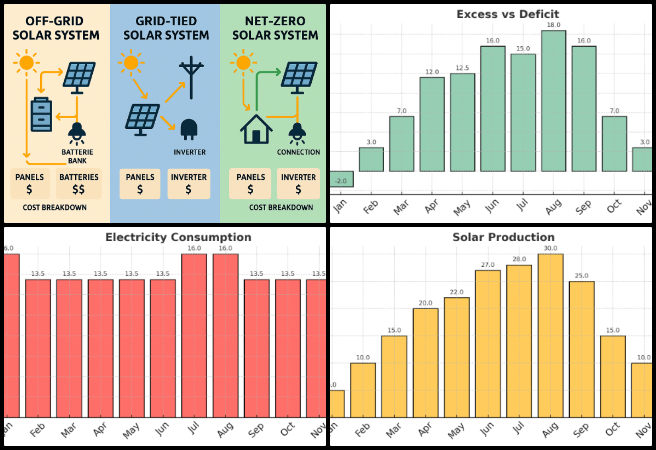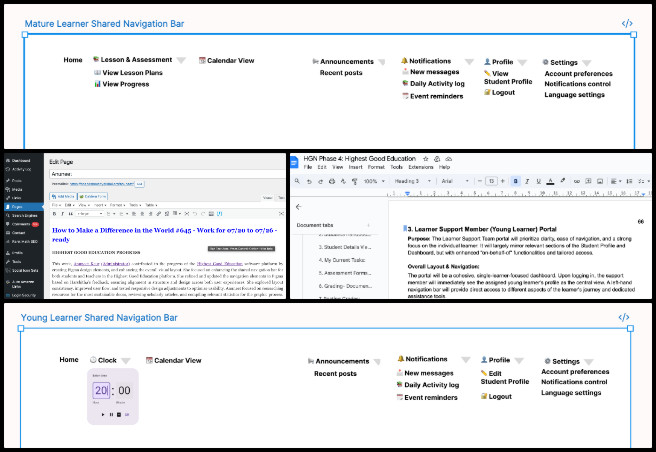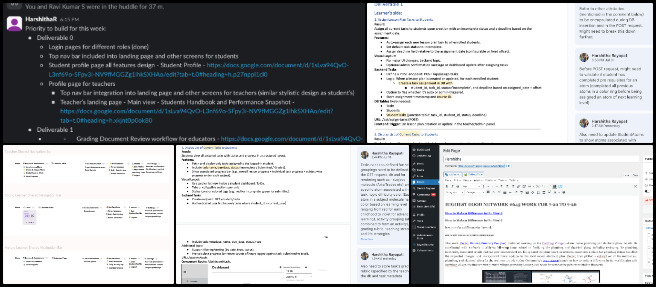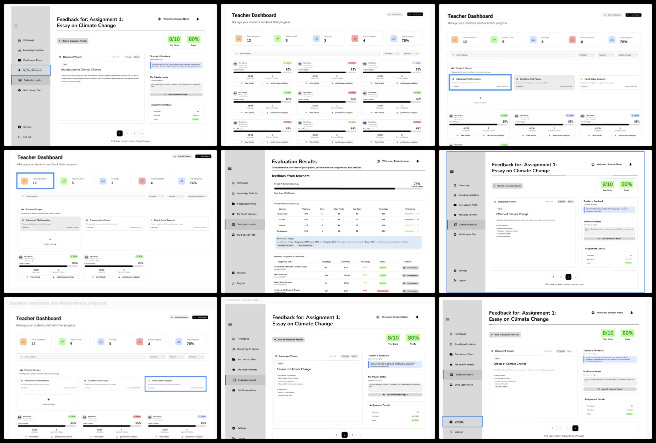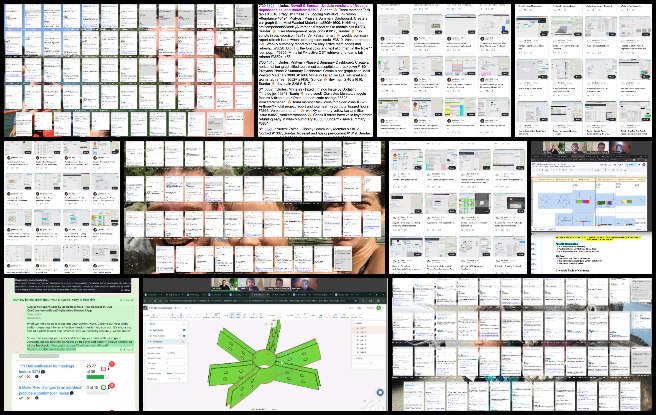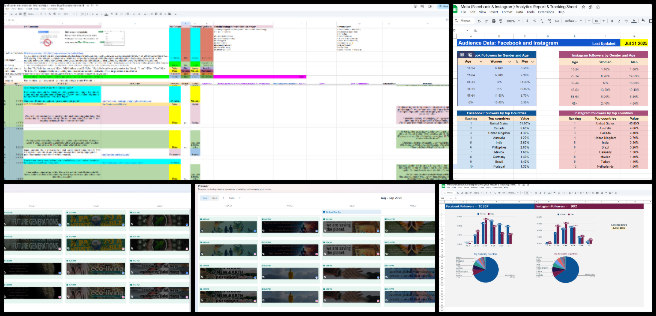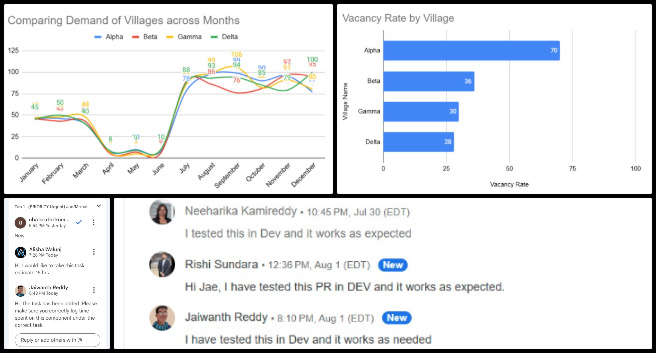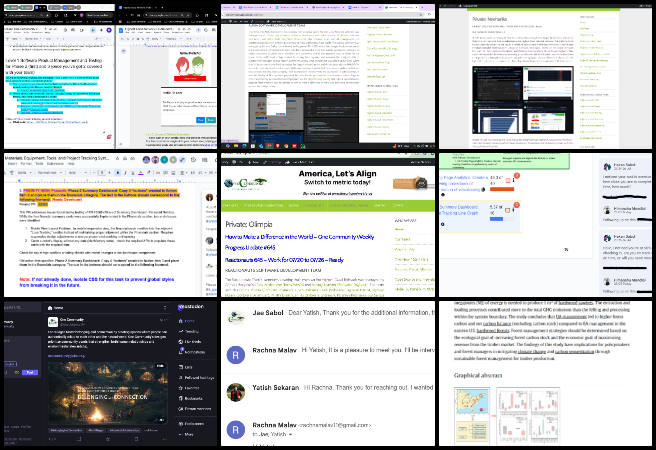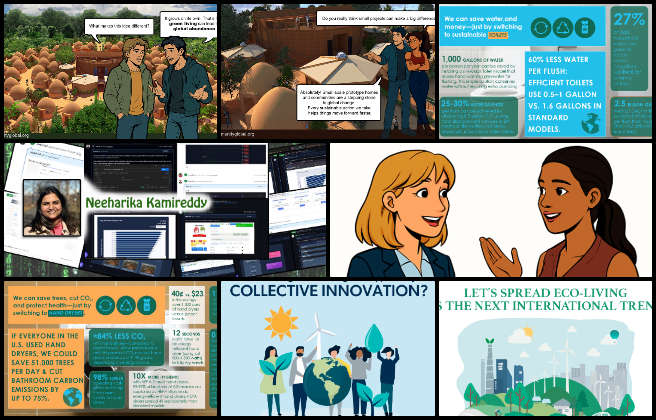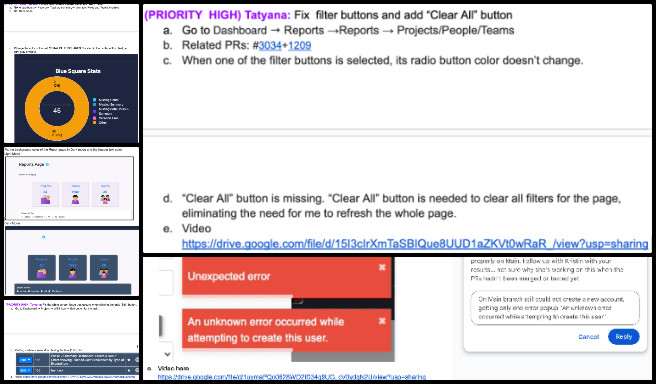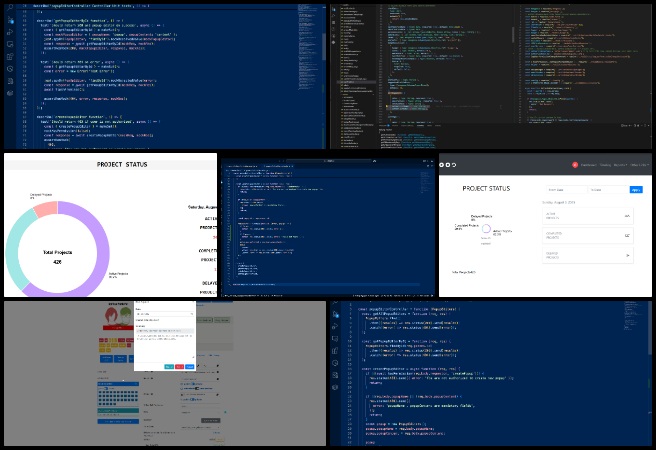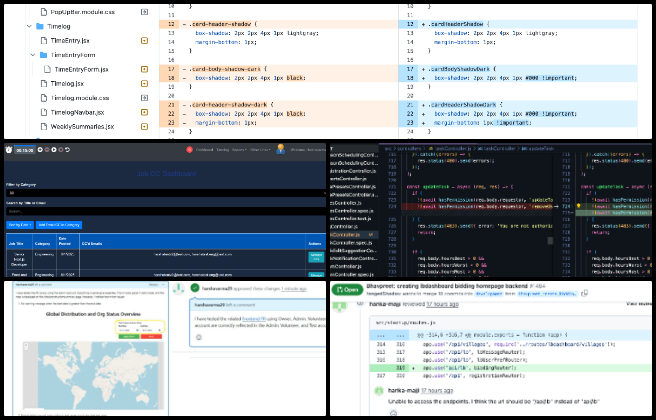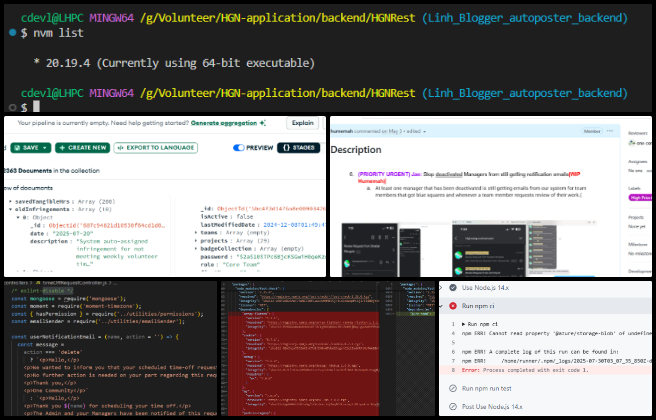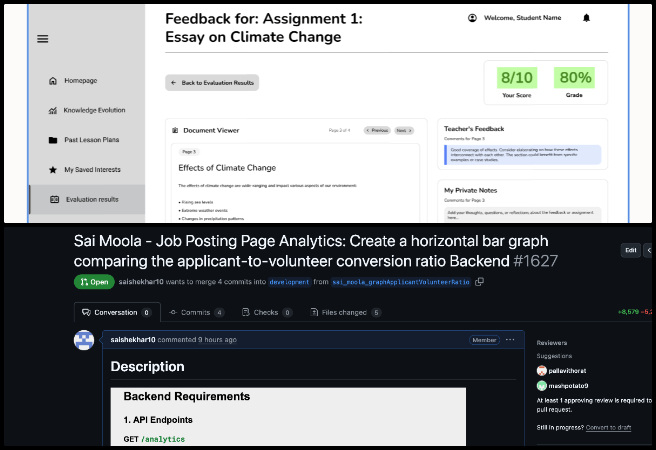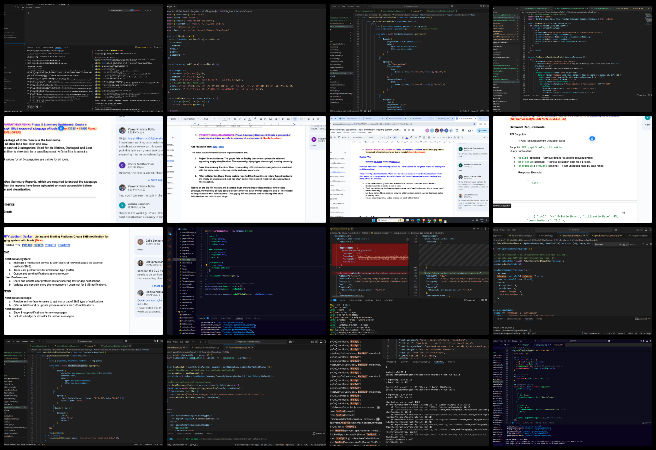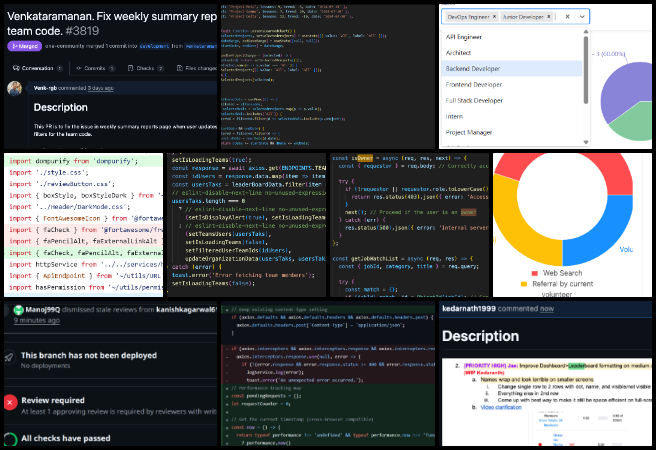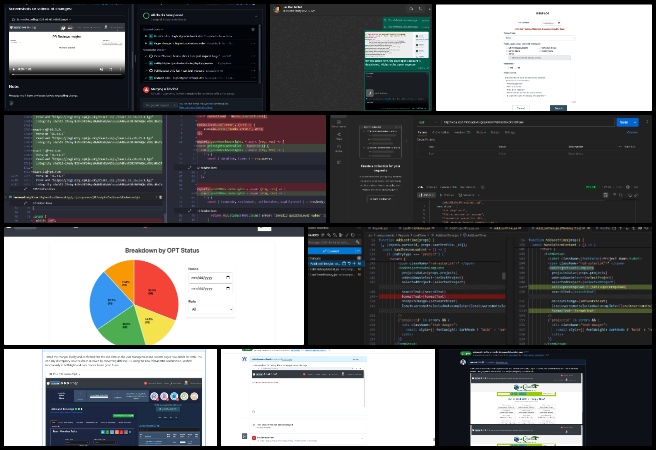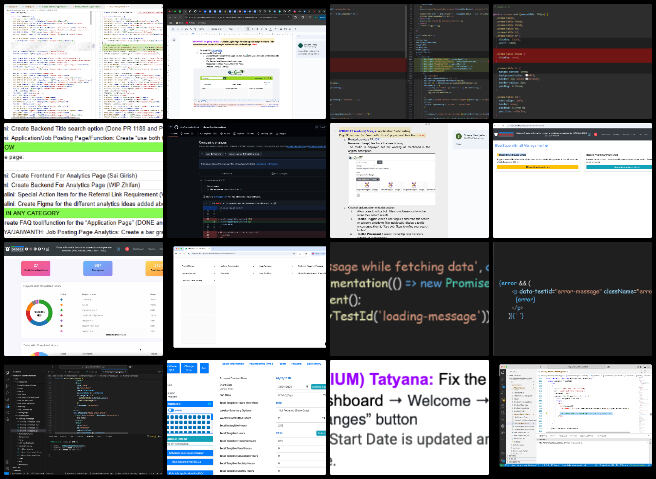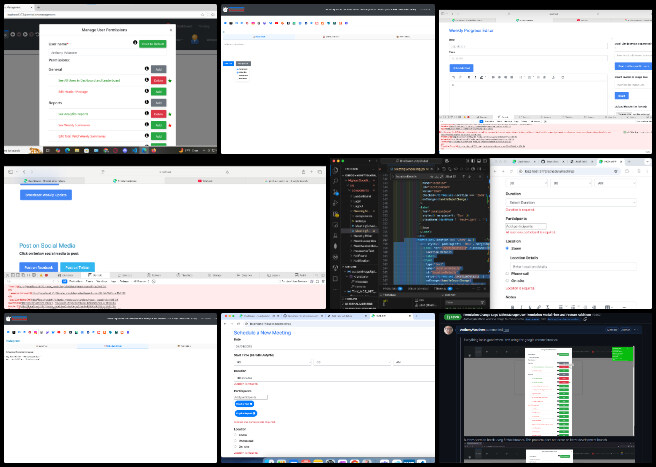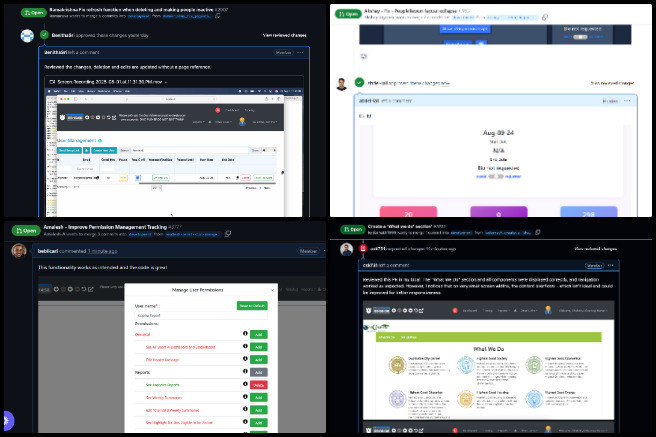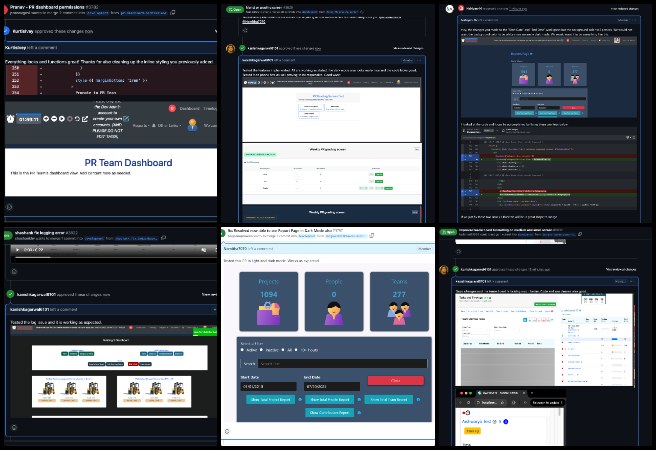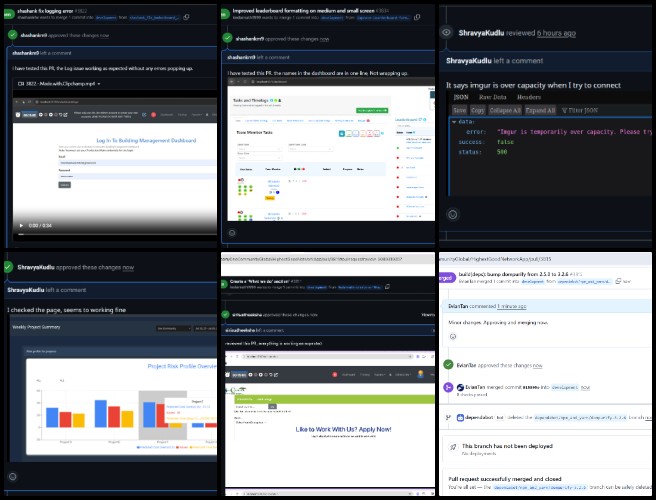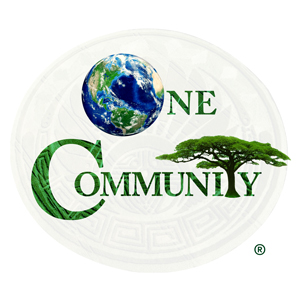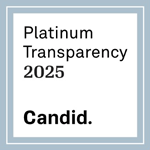Sustainable Resource Development and Access – One Community Weekly Progress Update #646
At One Community, we are advancing sustainable resource development and access by developing sustainable approaches to food, energy, housing, education, economics, and social architecture. Our all-volunteer team is dedicated to creating a self-replicating model of fulfilled living and global stewardship practices, designed for The Highest Good of All. By open sourcing and free sharing the complete process, we aim to establish a global collaboration of teacher/demonstration hubs that evolve sustainability, regenerate our planet, and create a world that works for everyone. Join us in building a future where innovative solutions are accessible to all, fostering a legacy of collective progress and shared responsibility.
- Here’s our project overview
- Here’s our world-change methodology
- Here’s how this becomes self-replicating
- Here’s how we are open source and free-sharing all the do-it-yourself designs
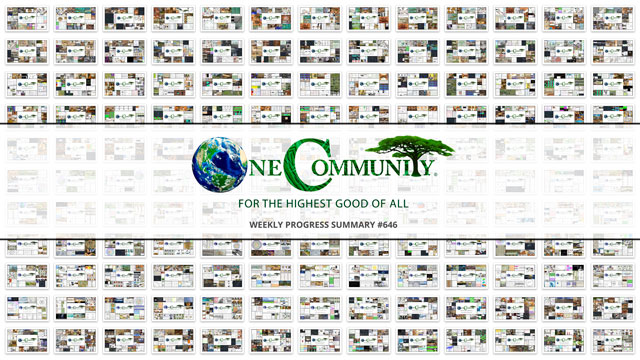
OUR MAIN OPEN SOURCE HUBS
Click on each icon to be taken to the corresponding Highest Good hub page.
One Community’s physical location will forward this movement as the first of many self-replicating teacher/demonstration communities, villages, and cities to be built around the world. This is the August 4, 2025 edition (#646) of our weekly progress update detailing our team’s development and accomplishments:
Sustainable Resource
Development and Access
One Community Progress Update #646
DONATE | COLLABORATE | HELP WITH LARGE-SCALE FUNDING
CLICK HERE IF YOU’D LIKE TO RECEIVE AN EMAIL EACH WEEK WHEN WE RELEASE A NEW UPDATE
YOU CAN ALSO JOIN US THROUGH SOCIAL MEDIA
ONE COMMUNITY WEEKLY UPDATE DETAILS
HIGHEST GOOD HOUSING PROGRESS
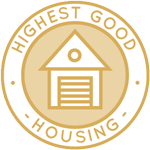 One Community is advancing sustainable resource development and access through Highest Good housing that is artistic and beautiful, more affordable, more space efficient, lasts longer, DIY buildable, and constructed with healthy and sustainable materials:
One Community is advancing sustainable resource development and access through Highest Good housing that is artistic and beautiful, more affordable, more space efficient, lasts longer, DIY buildable, and constructed with healthy and sustainable materials:
- Learn about: Our Upcoming Crowdfunding Campaign
- Learn about the different village models: 7 Sustainable Village Models
- Visit the open source portals for the first two: Earthbag Village OS Hub | Straw Bale Village OS Hub
This week, Derrell Brown (Plumbing Designer) continued working on the Earthbag Village 4-dome home plumbing plans details. He coordinated with Michaela to address follow-up items related to finalizing the plumbing plans, including reviewing the plumbing isometrics, associated details, and the updated model. He updated the plans based on a newly received architectural model, revised the plumbing details to reflect the requested changes, and incorporated minor updates to the isometric details. Derrell then plotted a colored set of the plans for the architect to review. One Community’s open source launch of sustainable resource development and access begins with Earthbag Village, the first of seven planned villages providing housing. See below for some of the pictures related to this work.
Karthik Pillai (Mechanical Engineer) continued working on the Vermiculture Toilet project by making design modifications to the waste dumping mechanism and shared the revised design for feedback. A proposal for Finite Element Analysis (FEA) was made to confirm the structural integrity of the updated design. In parallel, for the Earthbag Village 4-dome cluster roof design, he adjusted parameters in the structural simulation and reran the analysis. The updated simulation showed a deflection of under 0.44 inches, which is within the limits set by California Building Codes. The simulation results were shared with Michaela for review. As the first of seven planned villages, the Earthbag Village provides the initial housing within One Community’s open source designs for sustainable resource development and access. See the work in the collage below.
Ketsia Kayembe (Civil Engineer) continued worked on the three domes of the Earthbag Village and regained access to AutoCAD. She reviewed the construction template, gathered necessary information, and organized the files, ensuring they were named correctly. She also reviewed Yi-Ju’s work on the stormwater management design for the Earthbag Village. One Community’s open source framework on sustainable resource development and access begins with Earthbag Village, the first of seven planned villages providing housing. See below for some of the pictures related to this work.
Michaela Silva (Architect) continued fine-tuning details in the construction documents of the Earthbag Village. She combined the electrical Revit file with the main Revit file. She created roof edge details at the spa overhang and at the bedroom loft windows. Michaela also modeled the bedroom door header, which is designed to support the earthbags and she created a plan detail of the header condition. The Earthbag Village is the first of seven villages to be built as part of One Community’s open source model on sustainable resource development and access. See her work in the collage below.
Rahul Kulkarni (Mechanical Engineer) completed the initial setup and orientation with One Community, followed by a review of the summary report for the Vermiculture Toilet project to understand its scope. The focus areas were identified as the drawer modifications and the plumbing and wastewater drainage design. Time estimates were made based on an initial understanding of the project requirements. Work began on brainstorming ideas for the drawer redesign. The Earthbag Village, the first of seven planned villages, serves as the initial housing component within One Community’s open source model for sustainable resource development and access. See below for some of the pictures related to this work.
DUPLICABLE CITY CENTER PROGRESS
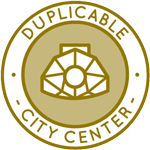 One Community is advancing sustainable resource development and access through a Duplicable and Sustainable City Center that is LEED Platinum certified/Sustainable, can feed 200 people at a time, provide laundry for over 300 people, is beautiful, spacious, and saves resources, money, and space:
One Community is advancing sustainable resource development and access through a Duplicable and Sustainable City Center that is LEED Platinum certified/Sustainable, can feed 200 people at a time, provide laundry for over 300 people, is beautiful, spacious, and saves resources, money, and space:
- Learn about this building and it’s function: Duplicable City Center Open Source Hub
This week, Andrew Chen (Industrial Designer) continued work on the Dormer second-floor window for the Duplicable City Center. He worked to iterate his work based on Jae’s latest feedback. He also created an upgraded 3D model with foam layering in the gaps between window parts where insulation is needed. Andrew also added assembly instructions for the insulation and top cover of the structure. The Duplicable City Center showcases One Community’s open-source approach to sustainable resource development and access. The images below illustrate aspects of this work.
Ariana Virginia Gutierrez Doria Medina (Industrial Designer) continued the analysis and cost estimation of the windows for the Duplicable City Center. The team worked on redrawing several pieces due to a change in material aimed at reducing complex cuts and eliminating glued components. The switch in material affected the window assembly process because of its different thickness, requiring adjustments to part dimensions and fit. Work was also done on updating the assembly instructions to reflect the new parts and ensure consistency with the revised design. Explore how One Community’s open-source Duplicable City Center empowers people to learn sustainable resource development and access. Browse the visuals below.
Ayushman Dutta (Mechanical Engineer) continued working on reviewing pipe materials for the Duplicable City Center hub connector design. He focused on preparing the model for FEA analysis, addressing persistent software errors that had been preventing the analysis from running correctly. To resolve these issues, Ayushman reinstalled the software and refined the model setup. During the FEA process, he encountered and corrected problems with the model, then reran a simplified analysis to ensure functionality. He made critical adjustments to the mesh and element sizes, enabling proper connectivity within the model and allowing the analysis to proceed effectively. In addition to his technical work, Ayushman began documenting the initial analysis results and completed the full documentation for his first round of testing on the hub connector. Throughout the week, he steadily progressed with the structural evaluation while troubleshooting technical issues as they arose. Through open-source design, the Duplicable City Center teaches sustainable resource development and access. Here are several visuals that relate to this work.
Nikhil Bharadwaj (Mechanical Engineer) continued working on creating the spoke designs for the Duplicable City Center hub connector. He updated the dome assembly to incorporate the new hub connector design for row 2 and made corresponding updates to the spreadsheet by adding 3D and 2D images of each spoke. Angles for the hub connector and spoke assembly were measured and recorded from four planes. Twisted spokes were identified in the documentation to indicate that they should be soft secured rather than fully tightened during assembly. The spreadsheet structure was modified to include both spoke and beam construction details. Beams were cut based on the clearance required to accommodate the bolt head, and a placeholder was added for video descriptions in each column. One Community’s Duplicable City Center is an open-source example of sustainable resource development and access. Here are a few pictures that showcase this work.
Nupur Shah (Mechanical Engineer) continued work on Row 2 of the Duplicable City Center hub connector. She updated and finalized the Row 2 design by incorporating the latest dimensional changes into the CAD models and ensuring all parts reflected the revised specifications. The spreadsheet was completed with all necessary information, including updated details for each component and their respective relationships. Additional updates were made to the hub connector section to reflect new information, and the sheet was further cleaned to improve organization and readability. These refinements ensure that Row 2 documentation is now consistent, accurate, and ready for the next phase of work. One Community’s Duplicable City Center is an open-source example of sustainable resource development and access. Here are a few pictures that showcase this work.
Sandesh Kumawat (Mechanical Engineer) continued working on the City Center Natural Pool and Eco-spa Designs. He relocated the latching mechanism from its original central position to the sides, addressing last week’s feedback and improving access while reducing interference with the folding action. He also identified that routing ropes around the shaft could lead to operational challenges and selected a winch to facilitate smooth rope management and prevent tangling. Additionally, Sandesh prepared a detailed project timeline outlining key milestones and deliverables. Discover sustainable resource development and access through One Community’s open-source Duplicable City Center. View the images below.
Vineela Reddy Pippera Badguna (Mechanical Engineer) continued conducting in-depth research on greywater reuse systems for the Duplicable City Center as part of efforts to make a difference in the world. She reviewed web pages related to the City Center’s laundry, faucets, and showers to gather data on water usage and updated the spreadsheet with more accurate calculations. Vineela also identified the number of lavatory sinks and showers in the building and located updated floor plan images for the website. She completed the greywater pipe routing design and submitted it for feedback, including a system to collect greywater from the building and direct it to a treatment pond using grease interception, ozone filtration, and UV sterilization. She then updated the spreadsheet to show water savings from sustainable fixtures. This open-source Duplicable City Center project demonstrates sustainable resource development and access through thoughtful design.
HIGHEST GOOD FOOD PROGRESS
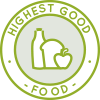 One Community is advancing sustainable resource development and access through Highest Good food that is more diverse, more nutritious, locally grown and sustainable, and part of our open source botanical garden model to support and share bio-diversity:
One Community is advancing sustainable resource development and access through Highest Good food that is more diverse, more nutritious, locally grown and sustainable, and part of our open source botanical garden model to support and share bio-diversity:
- Learn about the structures: Hoop House Hub | Aquapini & Walipini Open Source Hub
- See what we’ll be growing: Gardens & Hoop Houses | Large-scale Structures | Food Forest | TA
This week, the core team continued their review of the Master Tools, Equipment, and Materials/Supplies list. They added acronyms to the specific project lists where these items will be utilized. Corrections were ongoing, with proper acronyms replacing those outdated, and commas were inserted. Corrections included such tools as pulaski, pruning saw, hand rake, leaf rake, hack saw, hand saw, screwdriver set, flat file, and others. The Highest Good Food initiative is a key component of One Community’s open source plans, focused on sustainable resource development and access, and exemplifies the organization’s commitment through innovative design and implementation. Below are some of the images showcasing this work.
Dirgh Patel (Volunteer Mechanical Engineer) continued assisting with the Climate Battery design evolutions. He updated the ventilation section based on provided guidelines and revised the heat calculation equation to reflect different locations and greenhouse areas exposed to solar radiation. Additional assumptions were introduced to account for variations in sun angle and surface area affecting heat gain. He worked on explaining the heat gain equation due to solar exposure and the stress-strain equation related to soil pressure on pipes located 2.5 feet underground. Further work included identifying extra surface areas relevant to heat gain calculations based on changing latitude angles. Dirgh completed an Excel document for eight thermal cases and linked it to a Google Doc that includes related photos, explanations, and the location of supporting CAD files. One Community’s open source mission is powerfully reflected in the Highest Good Food initiative, which is focused on advancing sustainable resource development and access for global benefit. The following visuals illustrate highlights from this effort.
Faeq Abu Alya (Architectural Engineer) continued his work on the Earthbag Village. He improved visualizations by refining lighting and texture settings, added landscape elements to contextualize the Southwest and Southeast regions, updated materials to reflect current design specifications, produced a walkthrough video showcasing key features in both regions, and enhanced the visual presentation by capturing scenes from multiple angles for review. One Community’s open source launch of sustainable resource development and access begins with Earthbag Village, the first of seven planned villages providing housing. See below for some of the pictures related to this work.
Jay Nair (BIM Designer) continued working on Aquapini and Walipini Planting and Harvesting lighting and HVAC design. Jay focused on the lighting energy calculation for Greenhouse Walipini 1 by refining the data inputs for each zone and adjusting the calculations based on seasonal lighting needs and fixture specifications. He verified consistency with the project’s formatting standards and made updates to ensure alignment with the current greenhouse design approach. The Highest Good Food initiative plays a leading role in One Community’s open source platform, promoting sustainable resource development and access through sustainable and participatory development. Below are some of the images showcasing this work.
Nitin Parate (Architect) continued contributing to the Highest Good Food. His work focused on the Walipini section which was revised to incorporate the trench, reference line, and frost line based on feedback, with key dimensions added to improve clarity and technical accuracy, ensuring the drawing communicates construction details and thermal design considerations for the underground greenhouse. Captions were revised into a clear, stage-based sequence and diagrams were cropped to highlight the walipini, pond, and water flow, clarifying normal conditions, internal water accumulation, and management through the pipe and pond system, and distinguishing internal water management from site drainage. Updates were aligned with guidance from Jae and Shivangi, with additional work on captions, diagram labels, and integration of pond dimensions and overflow details. The walipini section in the diagram was cropped further to provide a clearer view of both the central pond and the walipini, and refinements to captions, labels, and layout were made to improve clarity and accuracy. The walipini passive cooling diagram was completed by relocating the temperature icon, updating captions to reflect accurate cooling processes, and showing air drawn from the moist central pond area cooling as it travels through the pipe to the walipini without shade or vegetation influences. The Highest Good Food initiative plays a leading role in One Community’s open source platform, promoting sustainable resource development and access through sustainable and participatory development. Below are some of the images showcasing this work.
Pallavi Deshmukh (Software Engineer) continued working on adding the new Zenapini 2 content to the Aquapini and Walipini Planting and Harvesting page. She completed and submitted information for five interviews. She received feedback from Jae and continued working on adding Zenapini #2 content from Silin to the website, completed the page, and submitted it for review again. After finishing the Zenapini #2 content, she began adding Walipini #2 content from Junyi Shi’s work to the website. Pallavi also created new content for blog 645 and collaborated with her teammates by reviewing their suggestions and incorporating feedback to produce a clear and consistent final version. In alignment with One Community’s open source objectives, the Highest Good Food project integrates sustainable resource development and access into a larger vision of regenerative living. Her contributions are highlighted in the collage below.
Shivangi Varma (Volunteer Architectural Designer And Planner) continued contributing to the Highest Good Food and completing the Aquapini and Walipini Planting and Harvesting page and Open Source Hub page, adding content where required, formatting the page, suggesting key plans, and incorporating additional sections. She reviewed the Loom video and accompanying feedback related to the Highest Good Food page and finalized the formatting and content for the page. Shivangi also reviewed graphics shared by the architect volunteer, and continued working on the Open Source Hub and Planting and Harvesting Page based on the input received. The Highest Good Food initiative plays a leading role in One Community’s open source platform, promoting sustainable resource development and access through sustainable and participatory development. The following visuals show highlights from this work.
Tyson Denherder (Volunteer Pioneer Team Member) continued contributing to the Highest Good Food by updating the Master Recipe Template and the Transition Kitchen Recipe Build-Out Tool to ensure they function as intended. This work included updating links, simplifying usability, fixing calculations, and correcting ingredient quantities. He tested all changes on duplicate pages to confirm they worked correctly before applying them to the main pages. After confirming functionality, he updated the instructions to align with the changes made. The Highest Good Food initiative plays a leading role in One Community’s open source platform, promoting sustainable resource development and access through sustainable and participatory development. Take a look at the following images related to this project.
HIGHEST GOOD ENERGY PROGRESS
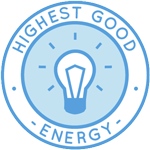 One Community is advancing sustainable resource development and access through Highest Good energy that is more sustainable, resilient, supports self-sufficiency and includes solar, wind, hydro and more:
One Community is advancing sustainable resource development and access through Highest Good energy that is more sustainable, resilient, supports self-sufficiency and includes solar, wind, hydro and more:
- Learn about the open source sustainable-energy foundations: Solar, Hydro, and Wind
- Explore our research into the most sustainable products and companies for saving water and energy: Insulation, Eco-laundry, Lightbulbs and Light Bulb Companies, Doors and Door Companies, Windows and Window Companies, Toilets, Faucets and Faucet Accessories, Urinals, and more.
This week, Dishita Jain (Data Analyst) continued supporting with the Highest Good Energy research and cost analysis for helping people create their own sustainable futures. Her tasks focused on the Energy Infrastructure Cost Analysis and Visualizations project for HG Energy by consolidating all tabs into a master sheet and adding Phase 1 and Phase 2 energy needs data. She researched data for different project phases and adjusted the energy needs calculations accordingly. She also incorporated feedback from Jae and completed revisions to the energy needs sheet before sharing it for review. In addition, Dishita updated the contents page to include newly added tabs and removed references to the individual sheets that were consolidated into the master file. Links to relevant sections were added for easier navigation, and the completed tabs were striked off to reflect their integration into the final version. One Community’s open source mission is powerfully reflected in the Highest Good Energy initiative, which advances sustainable resource development and access as a model for global benefit. Below are some of the images showcasing this work.
Shravan Murlidharan (Volunteer Electrical Engineer) continued contributing to the Highest Good Energy component by assisting with off-grid and grid-tied solar microgrid. He conducted in-depth research and updated documentation on solar cost trends, net metering, and case studies, focusing on clarity and accessibility. Shravan created and refined infographics, visuals, and layperson-friendly summaries—including one highlighting declining photovoltaic prices and rising U.S. adoption. He also revised the solar cost calculator guidance, developed performance indicators for off-grid analysis, and integrated them into the documentation. To ensure consistency, he formatted and proofread technical write-ups, refined net metering visuals, and produced simplified diagrams to help non-technical readers better understand key concepts. Guided by its open source philosophy, One Community developed the Highest Good Energy initiative to pioneer sustainable solutions through sustainable resource development and access. His contributions are shown in the collage below.
HIGHEST GOOD EDUCATION PROGRESS
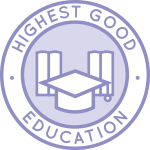 One Community is advancing sustainable resource development and access through Highest Good education that is for all ages, applicable in any environment, adaptable to individual needs, far exceeds traditional education standards, and more fun for both the teachers and the students. This component of One Community is about 95% complete with only the Open Source School Licensing and Ultimate Classroom construction and assembly details remaining to be finished. We’ll report on the final two elements to be finished as we develop them. With over 8 years of work invested in the process, the sections below are all complete until we move onto the property and continue the development and open sourcing process with teachers and students – a development process that is built directly into the structure of the education program and everything else we’re creating too:
One Community is advancing sustainable resource development and access through Highest Good education that is for all ages, applicable in any environment, adaptable to individual needs, far exceeds traditional education standards, and more fun for both the teachers and the students. This component of One Community is about 95% complete with only the Open Source School Licensing and Ultimate Classroom construction and assembly details remaining to be finished. We’ll report on the final two elements to be finished as we develop them. With over 8 years of work invested in the process, the sections below are all complete until we move onto the property and continue the development and open sourcing process with teachers and students – a development process that is built directly into the structure of the education program and everything else we’re creating too:
- Program Overview: Education Open Source Hub
- How the components work together in designing human orchestrated eco-abundance: How to use the Education for Life Program
- Lesson Plans for Life – Lesson Plans How-to
- Foundations of Outstanding Leaders, Teachers, and Communicators
- Curriculum for Life
- Teaching Strategies for Life
- Learning Tools and Toys for Life
- Evaluation and Evolution
This week, Anuneet Kaur (Administrator) continued contributing to the progress of the Highest Good Education software platform by creating Figma design elements, and enhancing the overall visual layout. She updated navigation elements based on Harshitha’s feedback, ensuring alignment across designs, and explored layout consistency, responsive design, and user flow optimization. Anuneet also began drafting content and selecting images for the Highest Good Education Program Licensing and Accreditation webpage. In support of sustainable resource development and access, she researched the most sustainable lightbulbs, reviewing scholarly articles and compiling statistics for future graphic work. She reviewed Yulin’s infographic on sustainability and provided feedback. Administratively, Anuneet edited summaries and collages for the Highest Good Society, Highest Good Education, and Core Teams, ensured accurate live blog participation, and reviewed fellow admin submissions. She also conducted hiring interviews. The One Community model of sustainable resource development and access, exemplified by sustainably built classrooms like these, drives sustainable change on a global scale. Her recent contributions are featured in the collage below.
Harshitha Rayapati (Program Manager) continued advancing the Highest Good Education platform by detailing deliverables, developing Figma designs, and expanding the visual layout of the student dashboard. She compiled and edited the weekly blog, created a supporting visual collage, and uploaded the finalized PDF to Dropbox after integrating admin team feedback and reviewing Housing’s progress. Harshitha also reviewed Deliverable 1 from Sphurthy, offering comments to improve the action item breakdown. In collaboration with Ravi, she prioritized Figma tasks for Deliverables 0 and 1. Her design work focused on enhancing the teacher dashboard, including tools for lesson planning, grade posting, and tracking atoms earned by students. The One Community model of sustainable resource development and access, exemplified by sustainably built classrooms like these, drives global sustainable change. The collage below highlights her recent contributions.
Ravi Kumar Sripathi (Software Engineer) continued working on the Highest Good Education software platform by creating Figma designs and enhancing the overall visual layout. He focused on two core components within the Teacher and Student Dashboard: the Students Handbook and the Evaluation Results module. The Students Handbook serves as the main view on the Teacher’s Dashboard, showing a scrollable list of assigned students with key information such as their name, learning level, recent activities, strengths, challenges, and progress against benchmarks. It also supports creating custom student groups and links to student profiles and analytics. For the Evaluation Results module, Ravi implemented a performance summary organized by assessment type, displaying weight, item count, total score, and individual results. He developed an assignment table with metrics like score, percentage, and submission status, along with integrated feedback featuring document previews, teacher comments, and private student notes. The One Community model of sustainable resource development and access, exemplified by sustainably built classrooms like these, drives lasting global change. Take a look at the following images related to his work.
HIGHEST GOOD SOCIETY PROGRESS
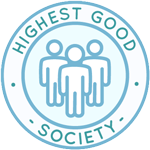 One Community is advancing sustainable resource development and access through a Highest Good society approach to living that is founded on fulfilled living, the study of meeting human needs, Community, and making a difference in the world:
One Community is advancing sustainable resource development and access through a Highest Good society approach to living that is founded on fulfilled living, the study of meeting human needs, Community, and making a difference in the world:
- Read the Highest Good society overview: Highest Good Society
- Learn about the model for fulfilled living and sharing: A Day in the Life
- Learn about the 4 economic models: RBE | For-profit | Non-profit | Entrepreneurship
- Learn about our open source community collaboration and management software: The Highest Good Network
This week, the core team completed over 44 hours managing additional volunteer work reviews not listed here, handling emails, overseeing social media accounts, supporting web development, identifying new bugs, integrating bug fixes for the Highest Good Network software, and interviewing and onboarding new volunteer team members. They also produced and incorporated the video above, which illustrates how sustainable resource development and access forms the foundation of One Community’s broader mission. The image below highlights some of this work.
Govind Sajithkumar (Project Manager) continued focusing on analytics and content management for Meta’s Facebook and Instagram platforms. He managed content rotation by updating feeds with new and scheduled posts and entered content details and metadata into the Open Source spreadsheet. Govind also updated social media analytics by processing new audience data and adding the latest performance stats to the platform data sheets. In addition, he completed PR Review Team Management, providing feedback on team documents, updating the WordPress blog with the weekly summary and collage, and maintaining the PR Review Team Table and HGN PR spreadsheet. He also submitted his admin feedback table, supporting One Community’s mission of sustainable resource development and access. The images below highlight key aspects of this work.
Jaiwanth Reddy Adavalli (Project Manager) continued developing the Job Applicants page along with key components of the Highest Good Network Phase 2 and Phase 4 dashboards, including the PR Team analytics section. He worked on the Listing and Bidding Dashboard by reviewing documentation to understand the platform’s functionality and creating wireframes and graphs for the dashboard layout. He tracked updates in software team management documents to continue task creation. Jaiwanth also tested multiple pull requests in the Highest Good Network software. As a member of the pull request review team, he reviewed submissions from the volunteer team assigned to him. This project plays a vital role in One Community’s commitment to sustainable resource development and access. The images below highlight his contributions from this week.
ADMINISTRATION TEAM
The Administration Team summary, covering their work administrating and managing most of One Community’s ongoing process for sustainable resource development and access, was managed by Bhakti Tigdi (Project Manager) and includes Harsha Ramanathan (Administrator), Himanshu Mandloi (Engineering Project Manager), Khushie Zaveri (Communication Strategist), Neeharika Kamireddy (Data Analyst), Olimpia Borgohain (Data Analyst and Team Administrator), Rachna Malav (Data Analyst), Rajeshwari Bhirud (Administrator), Rishi Sundara (Quality Control Engineer and Team Administrator), and Samhitha Are (Administrator). The Highest Good Network software is how we’ll be managing and objectively measuring our process for sustainable resource development and access through our social architecture, construction, production, and maintenance processes.
This week, the Administration Team continued supporting operations across research, software testing, recruiting, content creation, social media, and internal coordination. Harsha contributed to the sustainability infographic by researching flooring and adhesives, extracting quantitative data, and organizing inputs for use by the design team. Himanshu managed the daily TimeLog review process, addressed pending tasks, followed up with unresponsive team members, created a PDF for Sara with requested changes, and contributed a blog post on open-source sustainability. Khushie prepared for the social media campaign rollout by sharing the finalized calendar, managing post schedules, answering trainee questions, and maintaining her admin responsibilities. Neeharika assigned tasks by reviewing management documents and PR dashboards, followed up on task progress, tested pull requests, and completed her weekly admin duties, including conducting an interview. This effort aligns with One Community’s focus on sustainable resource development and access.
Olimpia analyzed LinkedIn analytics, scheduled posts for the next two weeks, adjusted content for platform needs, performed weekly admin tasks, and supported blog setup and review. Rachna conducted an interview, managed scheduling for others, and worked through hiring communications while reviewing her SEO contributions. Rajeshwari supported the Blue Steel and Binary Brigade teams by reviewing reports, adding comments, creating collages, uploading revised PDFs, and continuing her frontend testing training. Rishi tested and followed up on several PRs, reviewed completed PRs, merged individual blogs into blog 645, and completed SEO work while fulfilling weekend admin tasks. Samhitha completed Phase 3 Level 1 Software Product Testing by reviewing and verifying pull requests, identifying issues, creating action items, updating the task log, and comparing updates against design references to ensure consistency. This work contributes to One Community’s commitment to sustainable resource development and access. See below to view images of their work.
GRAPHIC DESIGN TEAM
The Graphic Design Team’s summary includes Qinyi Liu (Graphic Designer), Rutal Deshmukh (Graphic Designer), and Yulin Li (Graphic Designer), who focused this week on creating graphic designs that support sustainable resource development and access.
This week, Qinyi created social media images for One Community using game character styles, refined designs in Photoshop, edited posters based on feedback, and updated layouts with backgrounds relevant to sustainable resource development and access. Rutal worked on the next set of social media graphic images and completed creative tasks assigned by Shivangi, which she sent for feedback. She also received a request from Jae to create an announcement bio. Yulin revised graphics and a social media image based on feedback, managed Dropbox version control, joined review discussions, and created a collaboration announcement. See the Highest Good Society pages for more on how this contributes to sustainable resource development and access. The collage below showcases examples of their work.
HIGHEST GOOD NETWORK PROGRESS
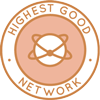 One Community is advancing sustainable resource development and access through open source Highest Good Network® software that is a web-based application for collaboration, time tracking, and objective data collection. The purpose of the Highest Good Network is to provide software for internal operations and external cooperation. It is being designed for global use in support of the different countries and communities replicating the One Community sustainable village models and related components.
One Community is advancing sustainable resource development and access through open source Highest Good Network® software that is a web-based application for collaboration, time tracking, and objective data collection. The purpose of the Highest Good Network is to provide software for internal operations and external cooperation. It is being designed for global use in support of the different countries and communities replicating the One Community sustainable village models and related components.
- Learn about our open source community collaboration and management software: The Highest Good Network
This week, the core team continued working on the Highest Good Network software pull requests and resolved several key issues. These included fixes for the “Total People Report” hours (#3563), the inability to send emails from the Send Emails tab (#3148), the issue preventing non-Owner/Admin accounts with ‘Edit Team 4-Digit Codes’ permission from editing the team code (#2933+1172), the Team Stats Bar Chart (#3498), the addition of asterisks to indicate mandatory fields and warning messages where required (#3274), frontend development for event participation analysis (#3052), updates to the permission management change logs table (#3533+1397), and fixing owner-level manage-all-permissions functionality (#3099+1221). This contribution reflects One Community’s dedication to sustainable resource development and access.
Items not fixed include the issue with creating a new account from the User Management page using the “Create New User” button, the user search feature and code cleanup (#3531+1392), and the addition of a 10+ hour filter and clear button on the Reports page (#3034+1209). They also reported new bugs related to changing the color of the “TOTAL BLUE SQUARES” text in the chart center, resolving a white screen issue triggered by clicking the task “Edit” button, and fixing filter buttons, including the addition of a “Clear All” button and the application of Dark Mode formatting. Additionally, they assigned a task to one volunteer. See the Highest Good Society and Highest Good Network pages for more on how this aligns with One Community’s commitment to sustainable resource development and access. The collage below highlights some of this work.
ALPHA SOFTWARE DEVELOPMENT TEAM
This week, the Alpha Software Team, working on the Highest Good Network software, was managed by Lin Khant Htel (Frontend Software Developer), Carlos Martinez (Full-Stack Software Developer), and Nikita Kolla (Full Stack Developer). This software serves as an internal management and communication platform designed to support sustainable resource development and access.
Lin reviewed and approved PR #1537, tested the changes locally to confirm all test cases passed, consulted with team members, reviewed weekly summaries, photos, and videos from Alpha team members, and handled overall management responsibilities. Carlos implemented a fix for the blue square description to include the author name and assignment date, refactored the code to improve readability, and updated the back end so the database can store infringement details. Nikita improved the responsiveness of the Project Status Donut Chart, resolved Redis-related environment issues by switching to a Linux setup, and completed design adjustments to ensure the chart adapts to browser window size changes. See the Highest Good Society and Highest Good Network pages to learn more about how this relates to sustainable resource development and access. See some of the team’s work in the collage below.
BINARY BRIGADE SOFTWARE DEVELOPMENT TEAM
The Binary Brigade Team’s summary, presenting their work on the Highest Good Network software, was managed by Nikhil Routh (Software Engineer) and includes Amalesh Arivanan (Software Engineer), Ramsundar Konety Govindarajan (Software Engineer), Harika Majji (Software Engineer), Harsha Rudhraraju (Software Engineer), and Taariq Mansurie (Full-Stack Developer). The Highest Good Network software is our tool for managing and objectively measuring progress, ensuring that all contributions are effectively tracked, aligned with our mission, and support sustainable resource development and access.
This week, Amalesh worked on fixing an issue with the “Contributors Report” button under Reports in the Dashboard and submitted the fix through PR #3787. He also improved the Permissions Management tracking feature under frontend issue #3214 and backend issue #1254, submitting the changes in PR #3777. Harika created six new tasks related to the Registration, Bidding Homepage, Bidding Overview, and Wishlist features. She identified layout and API issues, validation problems, and UI inconsistencies, and reviewed PRs #1613 and #1484, noting blockers that prevented testing. Harshavarma focused on resolving PRs related to the Application Page/Function task, including frontend PRs #2912 and #3592 and frontend/backend pairs #2875/#1152, #3367/#1270, #3433/#1409, and #3555/#1413. He also created new tasks, provided developer feedback, and followed up to confirm completion.
Ramsundar addressed a permission mismatch affecting the dashboard task delete feature. He updated role configurations to include the missing “removeUserFromTask” permission and simplified the hasRolePermission function to fix silent validation failures. Taariq resolved a filters bug on page refresh using browser-based storage, added filter color selection, improved the auto-scroll behavior for team code updates, enhanced Bio Status toggle styling, and fixed backend data retrieval issues. Nikhil migrated legacy CSS files to CSS Modules, updated JSX import statements and class names, and resolved compatibility issues from a version 20 update. He also contributed to PRs #3770, #3773, and the shared PR #3222, resolving merge conflicts and refining timelog and weekly summary reports. See the Highest Good Society and Highest Good Network pages for more, and the collage below for images of their work.
BLUE STEEL SOFTWARE DEVELOPMENT TEAM
The Blue Steel Team’s summary, presenting their work on the Highest Good Network software, was managed by Sheetal Mangate (Software Engineer) and includes Humemah Khalid (Software Engineer/Backend Developer) and Linh Huynh (Software Engineer). The Highest Good Network software is our tool for managing and objectively measuring progress, ensuring that all contributions are effectively tracked, aligned with our mission, and support sustainable resource development and access.
This week, Linh worked on resolving merge conflicts after syncing the Linh_Blogger_autoposter_frontend branch with the latest updates from the development branch, with most conflicts found in package-lock.json and index.jsx. Linh also addressed test failures related to missing or unresolved module imports, such as styles and react-quill, caused by incorrect import paths and missing dependencies. Although react-quill was listed in package.json, it was not properly installed due to dependency tree issues, which Linh resolved by removing node_modules and package-lock.json, cleaning the npm cache, and reinstalling dependencies. Linh also corrected an invalid lint-staged configuration block in package.json that was causing npm install to fail with a “must provide string spec” error. This work supports One Community’s framework for sustainable resource development and access.
Sheetal focused on integrating Reddit OAuth2 authentication, reaching the stage where both access and refresh tokens are obtained and stored in localStorage on the frontend for authenticated actions like submitting posts. An issue was discovered where the backend received the access token, but the frontend returned a 404 error. Debugging revealed the backend endpoint was triggered twice due to the structure of the useEffect hook, resulting in multiple unintended API requests. Investigation is ongoing to ensure the backend is called only once per action. Sheetal is also addressing an Axios 404 error after receiving the token response. Meanwhile, Humemah resolved an edge case where deactivated managers were still receiving notifications related to Blue Square reasons, updating the logic to prevent such notifications. See the Highest Good Society and Highest Good Network pages for more, and the collage below for images of their work.
CODE CRAFTERS SOFTWARE DEVELOPMENT TEAM
The Code Crafters Team, covering their work on the Highest Good Network software, was managed by Sai Moola (Software Engineer) and includes Ajay Naidu (Software Engineer), Humera Naaz (MERN developer), Juhitha Reddy Penumalli (Software Engineer), Ravikumar Sripathi (Software Engineer), and Sphurthy Satish (Software Engineer). The Highest Good Network software is how we’ll manage and objectively measure our process for establishing abundant community systems through our social architecture, construction, production, and maintenance processes, and support widespread and lasting eco-lifestyle access. This work reinforces One Community’s open-source model for sustainable resource development and access.
This week, Ajay worked on two medium-priority issues in the HighestGoodNetwork application. For the List of Teams page, he modified backend aggregation pipelines to include inactive teams without affecting logic for active users, added frontend filters by team status, and adjusted display behavior. He also upgraded the Node.js version to 20 and resolved deprecated dependencies, contributing to overall system robustness in support of sustainable resource development and access. Humera worked on PR 3581 to fix local development and frontend integration issues. She identified controller and permission problems, corrected broken import paths, restored missing modules like the Faq folder, cleaned up route definitions, and ensured the app compiled without errors—efforts aligned with foundational goals tied to sustainable resource development and access. Juhitha enhanced both backend and frontend components of the All Inventory Types page by adding missing PUT and DELETE routes, fixing POST routes for Reusables, and ensuring complete CRUD support in the inventory router. She also updated the inventory tables with new API integrations and implemented add, edit, and delete functionality with error handling—work that supports critical infrastructure for sustainable resource development and access.
Ravikumar developed two key components within the Teacher and Student Dashboard: the Students Handbook, which gives a view of assigned students and their progress, and the Evaluation Results module, which categorizes assessments and links to feedback, promoting learning transparency in alignment with sustainable resource development and access. Sai completed backend-frontend integration by fixing broken endpoints, validating them via Postman, and confirming smooth MongoDB data flow. He also selected a new task and plans to raise two pull requests to maintain project momentum in line with sustainable resource development and access. Sphurthy focused on backend updates for Deliverable 1, improving task assignment logic with new metadata fields and ensuring prerequisites are validated. She updated GET and POST endpoints to return grouped task data and began debugging a dashboard issue—work directly enhancing the platform’s support for sustainable resource development and access. See the Highest Good Society and Highest Good Network pages for more on how this relates to sustainable resource development and access. View some of the team’s work in the collage below.
DEV DYNASTY SOFTWARE DEVELOPMENT TEAM
The Dev Dynasty Team’s summary, covering their work on the Highest Good Network software, was managed by Zhifan Jia (Software Engineer) and includes Adithya Cherukuri (Volunteer Software Engineer), Deekshith Kumar Singirikonda (Developer), Dharmik Patel (Software Engineer), Manvitha Yeeli (Software Engineer), Neeraj Kondaveeti (Software Engineer), Prasanth Bhimana (Software Engineer), Saicharan Reddy Kotha (Software Engineer), Sankar Sai (Software Engineer), Shraddha Shahari (Software Engineer), Vamsi Krishna Rolla (Software Engineer), Vamsidhar Panithi (Software Engineer), and Varsha Karanam (Software Engineer). The Highest Good Network software is how we’ll manage and objectively measure our process for establishing abundant community systems through our social architecture, construction, production, and maintenance processes to support widespread and lasting eco-lifestyle access. This progress helps drive One Community’s sustainable resource development and access goals forward.
This week, Adithya reviewed PRs and began developing a horizontal bar chart to display average pledged months by role. He studied the backend API, tested with Postman, and debugged chart data. Deekshith built a secure registration API for the Listing and Bidding dashboard with bcrypt hashing and integration testing. Dharmik added four protected routes to the analytics dashboard, resolved CI failures, and fixed a Node.js build error—each task improving reliability tied to sustainable resource development and access. Manvitha fixed a frontend bug with bio status persistence, raised and revised several PRs, and enhanced dark mode support. Neeraj transitioned from reviewing to development midweek, bid hours, explored job board APIs, and documented console behavior. Prasanth audited documentation, tested PRs, and collaborated with Saicharan and Varsha to enhance workflows aligned with sustainable resource development and access. Saicharan tested features, flagged issues, and expanded visualizations while improving test coverage.
Sankar set up a Node.js environment, resolved backend setup issues, and verified PRs for completeness in support of sustainable resource development and access. Shraddha resolved conflicts, cleaned up legacy PRs, and improved pagination styling for dark mode. Varsha traced task flows to PRs, flagged gaps, and addressed UI inconsistencies. Vamsi finalized a tool usage bar chart with filters and responsive layout. Vamsidhar resolved merge conflicts, fixed versioning issues, and tested admin-side tracking features. Zhifan closed PRs and launched analytics backend work by implementing privacy-focused metrics and admin-restricted endpoints—building insight infrastructure to support sustainable resource development and access. See the Highest Good Society and Highest Good Network pages for more on how this relates to sustainable resource development and access. View some of the team’s work in the collage below.
EXPRESSERS SOFTWARE DEVELOPMENT TEAM
The Expressers Team’s summary, which covers their work on the Highest Good Network, was managed by Rahul Trivedi (Software Engineer) and includes Meenashi Jeyanthinatha (Full Stack Developer), Reina Takahara (Software Developer), Strallia Chao (Software Engineer), and Tanmay Arora (Software Engineer). The Highest Good Network software helps us manage and objectively measure our progress toward sustainable resource development and access through innovative software development, testing, and collaboration.
This week, Meenashi implemented the Event Feedback Form using React and Redux, including associated actions and reducers. She added validations for the name, email, and rating fields and implemented toast notifications for submission feedback. A modal was also introduced to confirm submissions when comments are left empty, triggering only on the first attempt, and she reviewed the persistence and state reset logic. The rating component was updated for keyboard accessibility. Dynamic passing of the event ID to the form was enabled, though it remains hardcoded in the FollowupEmailTemplate and will require changes. API integration for persisting form data is pending. For the financial API tests, she updated data for building materials, tools, and projects to reflect the new month, preventing mom_changes API failures. One previous pull request was closed. On the Questionnaire Dashboard, her updates to the Additional Info component encountered merge conflicts due to a Node.js version update, followed by a Husky pre-commit error. She resolved the issues by renaming a file and adjusting import paths, generated a new yarn.lock file, and bypassed pre-push errors using the –no-verify flag. All CI tests passed after pushing the changes. This work contributes to One Community’s mission of sustainable resource development and access.
Rahul began development on the Phase 3 navbar, reviewing the codebase and identifying behavior issues before completing the initial layout. He also started transitioning into the Team Manager role by participating in knowledge transfer sessions with the current manager. Reina updated her branches to use Node.js v20, resolved merge conflicts, and addressed feedback on issue #3432. She also corrected a bug in pull request #1342 where missing code caused incorrect backend data retrieval and requested additional reviews. Strallia prepared the Phase 3 team for upcoming tasks through coordination meetings, pull request reviews, and setting weekly priorities. She also collaborated with other managers to remove blockers and ensure alignment across teams. Tanmay improved update notifications by replacing the hash-based system with a version-based mechanism. He updated the React component to fetch version information from a version.txt file, compared it with stored browser data, and displayed a refresh prompt when updates were detected. He proposed updates to the CI/CD pipeline to auto-generate this version file using the latest commit hash or version tag and confirmed that notifications appeared consistently after deployments. These contributions all support One Community’s vision for sustainable resource development and access. See the Highest Good Society and Highest Good Network pages for more on how this contributed to sustainable resource development and access. See the collage below to view the team’s work.
LUCKY STAR SOFTWARE DEVELOPMENT TEAM
The Lucky Star Team’s summary, which covers their work on the Highest Good Network, was managed by Barnaboss Puli (Volunteer Software Engineer) and includes contributions from Dipti Yadav (Software Engineer), Durga Venkata Praveen Boppana (Software Engineer), Ganesh Karnati (Software Engineer), Kedarnath Ravi Shankar Gubbi (Software Engineer), Manoj Gembali (Software Engineer), Pranav Govindaswamy (Software Developer), Shashank Madan (Software Engineer), Veda Bellam (Software Engineer), and Venkataramanan Venkateswaran (Software Engineer). Their work continued to support our goal of sustainable resource development and access through collaborative and cross-functional software development.
This week, Barnaboss improved the Volunteer Hours Distribution Pie Chart and created the horizontal bar graph for tool utilization and downtime using Chart.js with responsive adjustments. He built a POST endpoint for lesson submission, added server-side validation and error handling, implemented retry and logging mechanisms, tested edge cases, and ensured correct tag and permission handling. He completed end-to-end testing for the lesson submission flow, improved accessibility with ARIA labels, refactored frontend form components, and optimized the layout for mobile and tablet views. Dipti worked on the task involving confirmation modals for individual role changes. After receiving owner account access, she analyzed the relevant code using debugger tools and identified changes required on both frontend and backend. She revisited and responded to comments on a previous pull request. Durga completed updates to the ReportPage, ensuring it was viewable in both dark and light modes. He implemented changes to the start and end date fields and submitted a pull request for review. He added XSS protection to various pages, focusing on areas involving URLs and links. Ganesh created a new branch for implementing a horizontal bar chart for lessons learned, set up the frontend environment, and used Chart.js and react-chartjs-2 to build a responsive chart. He added filters, tooltips, trend indicators, and navigation logic, applied accessibility improvements, and aligned styling with the dashboard. Kedarnath improved the layout of the Dashboard > Leaderboard for medium and small screens by adjusting how names, icons, and other details were displayed to prevent awkward wrapping and enhance readability. Manoj completed the PR for the PR Grading Screen, migrated the project to the latest Node version, resolved related conflicts, and refined the layout and responsiveness of the Dynamic Scoring and Ranking page. This collective work supports One Community’s mission for sustainable resource development and access.
Pranav worked on integrating and debugging the Experience Breakdown chart feature for the HGN frontend. He resolved merge conflicts in multiple files including PermissionsConst.js and routes.js, addressed ESLint configuration issues from the transition to eslint.config.js, and fixed test cases in UserPermissionsPopup.test.jsx. He implemented frontend logic to fetch applicant experience data filtered by date range and selected roles, adjusted API calls and chart rendering using recharts and react-chartjs-2, and resolved environment proxy and backend connectivity issues. He verified routes, added missing imports, ensured component registration, and used Postman for backend verification. A pull request was submitted for these changes. Shashank replaced direct API calls in dashboard child components with Redux dispatches and selectors, used Reselect to optimize performance, and reduced API call frequency by refactoring SummaryBar, Leaderboard, and WeeklySummary components. He addressed Node v20 upgrade conflicts by creating a new branch and reintegrating changes. While reviewing the site, he found and documented a bug causing a blank dashboard for non-owner users. Veda worked on the applicant source donut chart feature for the Job Posting Page Analytics project, resolving merge conflicts, aligning with the latest development changes, and adding filters for role and date breakdowns. She adjusted the UI, updated the frontend environment to Vite, upgraded Node.js to version 20, and completed the core functionality of the chart. Backend work was paused due to lint-related commit issues. Venkataramanan worked on UI and functionality issues across the platform, submitting multiple PRs to fix toggles, icons, refresh behavior, and rendering issues. He addressed a Node version conflict, tested features like checkboxes and UI alignment, reviewed a separate PR, and flagged an issue on the User Management page. This effort reflects One Community’s commitment to sustainable resource development and access. See the Highest Good Society and Highest Good Network pages to learn more about how this work supports sustainable resource development and access. See the collage below to view the team’s work.
MOONFALL SOFTWARE DEVELOPMENT TEAM
The Moonfall Team’s summary, which covers their work on the Highest Good Network, was managed by Rishitha Adepu (Software Administrator) and includes contributions from Shashank Kumar (Software Engineer), Aayush Jayant Shetty (Software Engineer), Alisha Walunj (Software Engineer), Bangaru Babu Kota (Software Engineer), Bhavpreet Singh(Software Engineer), Gurusai Chittoji (Software Engineer), Ramakrishna Aruva (Software Engineer), Sai Krishna (Software Engineer), and Uha Kruthi (Software Engineer). Their combined efforts support the advancement of sustainable resource development and access.
This week, Shashank raised a pull request for the issue log problem, which included changes to the user interface and route handling. He also completed several other assigned tasks. During the week, he handled complications from a Node.js upgrade, resolving most merge conflicts and errors, with plans to raise the remaining pull requests. Gurusai had a call with the team to discuss ongoing work, reviewed project documentation, tested PRs 3724 and 1516, verified PR 3609, documented the results, and reviewed PR 3555 with feedback and follow-ups. Sai reviewed PRs 1332, 1337, 3775, and 3814, started work on fixing user password permissions, and discovered and fixed a related issue affecting dashboard loading. Uha worked on the Listing and Bidding Platform, testing and merging PRs 1280, 3293, and 1402 for location-based search. She also verified backend and frontend features in multiple other PRs including 1462, 1341, 3322, 3633, 3738, 1528, 3802, 3661, 3733, and 1507. These tasks supported One Community’s goals for sustainable resource development and access.
Alisha completed the backend task for a Loss Tracking Line Graph for the Phase 2 Summary Dashboard, addressing PR feedback and validation errors. She began code review for a village-based filter dropdown and tackled compatibility issues from the migration to Node 20 while working on the Job Posting Page Analytics pie chart. Ramakrishna resumed work by updating a project to Node.js v20 and confirming functionality. He also began development of a new pie chart for backend labor hours and refined cache invalidation logic for lost time entry data. A contributor reviewed and verified completed action items for the HGN Software Team Questionnaire and the PR Team Admin Dashboard by testing pull requests and validating features. These actions contributed to One Community’s mission of sustainable resource development and access. See below for some of the team’s work.
REACTONAUTS SOFTWARE DEVELOPMENT TEAM
The Reactonauts Team’s summary, covering their work on the Highest Good Network was managed by Olimpia Borgohain (Data Analyst and Team Admin) and Akshay Jayaram (Software Engineer). The team includes Fatima Villena (Software Engineer), Guna Pranith Reddy Cheelam (Software Developer), Jaydeep Mulani (Software Developer), Kristin Dingchuan Hu (Software Engineer), Peterson Rodrigues dos Santos (Full Stack Developer), Rishwa Patel (Software Developer), Siva Putti (Software Engineer) and Sreeja Nandyala (Software Engineer). The Highest Good Network software helps manage and objectively continue to support by focusing on sustainable resource development and access, social architecture, construction, production, and maintenance processes to build sustainable and thriving ecosystems. This solution is portable, scalable, and ideal for off-grid or sustainable living communities.
This week, Akshay worked on resolving issues in the PeopleReport page that arose after the merger of PR3670, restoring broken functionality and implementing layout consistency and component rendering improvements. He collaborated with Jae to address profile information updates and adjusted the conditional rendering of time entry data. He reviewed the calculation of totalTangibleHrsRound, ensured time entries were properly fetched by logging API responses and validating reducer behavior, and investigated Husky pre-commit and pre-push hook issues, resolving npx and npm path resolution errors. Akshay also disabled blocking checks to complete branch pushes, helped set up development environments for two new teammates, resolved Node and Prettier-related issues, and coordinated Reactonauts team activities by tracking daily pull requests, assisting with Git errors, and submitting the weekly review. These efforts support One Community’s mission of sustainable resource development and access. Fatima worked on bug fixes related to PR 3814, adjusting the mobile view to ensure table headers were visible and correcting logic for the table promotion button. She also contributed to the 138 Phase 2 Summary Dashboard by implementing a pie chart titled “Distribution of Labor Hours.” Guna Pranith began frontend work on the listings home page, fixing console errors related to image loading and correcting duplicate tab headings, where both tabs displayed “Listings” instead of the expected “Listings” and “Biddings.”
Jaydeep focused on the BlueSquare Manual Email Trigger Buttons, implementing permissions, securing backend endpoints, adding a permission-based navigation link under “Other Links,” and ensuring UI alignment and responsiveness. He integrated the buttons with backend APIs and conducted end-to-end testing. Kristin resolved a PDF generation error from the Total Construction Summary Page by identifying a missing Labor Cost API, creating and testing a new backend route, and displaying mock data in the frontend while resolving the fetch error. Peterson improved the Permissions Management page by styling the loading message for better visibility in both dark and light modes and centering it on the screen. Rishwa worked on the PR Review Team Analytics Dashboard, adding dynamic filtering and rendering features to the Skill Cards and Review Summary components. Her updates included contextual filtering based on review types and contributor roles, horizontal bar graph visualizations, and early work on checkbox-based grading inputs to align with PR quality assessment. Siva fixed misalignment of End Date and Status elements on the Profile page and resolved an issue in the “Volunteering Time” tab where Start Date changes weren’t saving. Sreeja cleaned up the Application Page and Function document, reviewed 10 feature-related action items, and reviewed several PRs including 1188, 1195, 1285, 3591, 3118, 1213, and 3489. She also followed up on related analytics PRs and Figma design progress via Slack, updating documentation to clarify actionable and non-actionable items. See below for the work done on sustainable resource development and access.
SKYE SOFTWARE DEVELOPMENT TEAM
Skye Team’s summary, covering their work on the Highest Good Network was managed by Olimpia Borgohain (Data Analyst and Team Admin) and Anthony Weathers (Software Engineer). The team includes Gopikalakshmi Asok Kumar (Software Developer), and Marcus Yi (Software Engineer) and Snehal Dilip Patare (Software Engineer). The Highest Good Network software helps manage and objectively continue to support by focusing on sustainable resource development and access, social architecture, construction, production, and maintenance processes to build sustainable and thriving ecosystems. This solution is portable, scalable, and ideal for off-grid or sustainable living communities.
This week, Anthony handled merge conflicts for PR#3633 and reviewed a suggested changes comment on PR#3600, leaving a follow-up request for browser and role details. As part of his continued work on sustainable resource development and access, he reviewed PR#3713 to investigate a red dashboard icon notifications display and re-reviewed PR#3424 to confirm the necessary update was included. He also verified that a previously reported bug no longer appeared on the live app and informed Jae so the task could be removed. Additionally, Anthony reviewed the details and demo video for the “Fix Timelog Times Not Totaling Task-Time-Worked on Dashboard > Tasks Tab” task. Gopika worked on the Bell Notification feature, updated the codebase with the latest changes, and upgraded the NVM version. She reviewed the previously implemented Schedule Meeting page, identified and added missing mandatory fields, and fixed an issue that prevented navigation to the dashboard after meeting creation. Gopika also completed work on a Fix Report issue, upgraded the NVM version again, and merged both backend and frontend changes into the development branch. This effort contributes to One Community’s plan for sustainable resource development and access.
Marcus fixed a dependency issue on the development branch to ensure other team members could work on their branches without errors. He also built the basic frontend for the OnlyWire replacement project by adding tabs for each platform One Community Global posts on and created sections within each tab for making a post. Snehal worked on updating Node.js from version 14 to 20 and merged the development branch into the Snehal_social_media_schedular branch for both backend and frontend repositories. After the update, she encountered an issue with routing that caused previously functioning APIs on the Announcement page to stop working. See below for the work done on sustainable resource development and access.
SOFTWARE PR REVIEW TEAM A-F
This week, the PR Review Team’s summary for members with names starting A–F, managed by Neeharika Kamireddy (Data Analyst), highlights their contributions to the Highest Good Network software. This platform forms the foundation for measuring results that advance sustainable resource development and access. Active team members included Abdelmounaim Lallouache (Software Developer), Benitha Sri Panchagiri (Software Engineer), Carl Bebli (Software Developer), and Chaitanya Swaroop Kumar Allu (Software Engineer). They supported the project by thoroughly reviewing this week’s pull requests. Learn more about how the platform measures sustainable resource development and access by exploring the Highest Good Network open source hub. The collage below showcases a compilation of this team’s work.
SOFTWARE PR REVIEW TEAM G-N
This week, the PR Review Team’s summary for members with names starting from G–N, managed by Govind Sajithkumar (Software Project Manager), highlights their contributions to the Highest Good Network software. This platform serves as a foundation for measuring our progress toward sustainable resource development and access. Active team members included Kanishk Agarwal (Software Engineer), Kurtis Ivey (Full Stack Developer), Manvi Kishore (Software Engineer), Nahiyan Ahmed (Full Stack Software Developer), Namitha Pawar (Software Engineer), and Nathan Hoffman (Software Engineer). They reviewed all PRs shared in this update. Learn more about how the platform measures sustainable resource development and access by exploring the Highest Good Network open source hub. The team’s progress is illustrated in the collage below.
SOFTWARE PR REVIEW TEAM O-Z
This week, the PR Review Team’s summary for team members with names starting from O–Z, covering their work on the Highest Good Network software, was managed by Jaiwanth Reddy Adavalli (Software Project Manager). The Highest Good Network software is a foundation for measuring our progress toward sustainable resource development and access. This week’s active members of this team were: Marneni Shashank (Software Engineer), Rishitha Chirumamilla (Software Engineer), Rohit Mamidi (Software Engineer), Shravya Kudlu (Software Development Engineer), Sohail Uddin Syed (Software Engineer), Siri Sudheeksha Vavila (Software Engineer), Sundar Machani (Software Engineer), Suparshwa Patil (Software Engineer), and Yiyun Tan (Software Engineer). They reviewed all PRs shared in this update. Explore how the Highest Good Network supports sustainable resource development and access by visiting the project’s open source hub. A snapshot of their work is presented in the collage below.
AND WE PRODUCED THIS WEEKLY UPDATES BLOG – CLICK HERE TO SUBSCRIBE
FOLLOW ONE COMMUNITY’S PROGRESS (click icons for our pages)
INVESTOR PAGES
GET INVOLVED
DONATE | WAYS ANYONE CAN HELP | MEMBERSHIP
CLICK HERE FOR ALL PAST UPDATES
 One Community
One Community